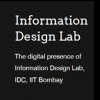Details of contributing to the D’source project:
Dsource project seeks contributions to its content from academicians and researchers.
You could send the content to us as a PDF (with referenced images and text) to dsource.in[at]gmail.com or by uploading the content at https://ourdsource.in/
The content on Dsource is part of the Open Design initiative and is licenced under Creative Commons Attribution-NonCommercial-ShareAlike license.
D’source Courses:
The courses could be related to Animation, Communication, Interaction, Product and
vehicle Design (including Fundamentals of Design)
The following format is suggested for Course:
a. Introduction to the subject.
b. Notes in brief on the subject with illustrations/images/video. This could include sub-
categories.
c. Exercises for design students on the subject.
d. Examples of solved design exercise.
e. Full Reference (Author, Title, Publication, Year, Place) for the subject.
The contributed course will be open to public after it has been verified by the D’source
team.
Examples/References: dsource.in/course/product-drawing
D'source Resources:
Resources could be about crafts, products, artifacts, celebrations and festivals connected
with India. The documentation of resources should be based on notes in brief supported by
photo and/or video.
The following format is suggested for Resource:
a. Introduction to the resource.
b. Environment – the location, people, surroundings, etc.
c. Making process – from start to the final product.
d. Materials and tools used in the process.
e. Variations – different themes, different products, etc.
f. Full Reference (Author, Title, Publication, Year, Place) for the subject.
The contributed resource will be open to public after it has been verified by the D’source
team.
Examples/References:
dsource.in/resource/dhokra-shilp,
dsource.in/resource/kites
D'source Case Studies:
Case studies could be about product design, automobile design, animation design,
communication design, Interaction Design, etc. The documentation of case studies should
highlight the process of design.
The following format is suggested for Case Studies:
a. Introduction to the Case Study.
b. Process and methodology.
c. Documentation of design process – from start to the final product (problem
identification, primary and secondary research, analysis and insights, concepts and
ideation, prototyping, final concept, details/specification, user testing and feedback.)
d. Full Reference (Author, Title, Publication, Year, Place) for the subject.
The contributed case study will be open to public after it has been verified by the
D’source team.)
Examples/References: dsource.in/case-study/truck-era-2020,
dsource.in/case-study/teaching-culture-through-storytelling
D'source Show Case:
The following format is suggested for Show Case:
a. Introduction to the firm/organisation.
b. Key people in the firm/organisation.
c. Major contributions in design of your firm/organization.
d. Examples of products designed by the firm/organisation.
e. Full contact details.
This contribution will be open to public after it has been verified by the D’source team.
Examples/References: dsource.in/showcase/ticket-design,
dsource.in/showcase/bent-design
D'source Open Design:
Here you can contribute your idea/concept/design that is open to be shared by others.
The following format is suggested:
a. Introduction to the idea/concept/design
b. Process and methodology
c. Documentation of final concept with details/specifications (using text and photos/video
along with drawings and illustrations)
d. Contact details
The open design is shared under Creative Commons Attribution-NonCommercial-ShareAlike
license.
The contributed open design resource will be open to public after it has been verified by
the D’source team.
Examples/References: dsource.in/tool/trinetra/
Show less...






Comments